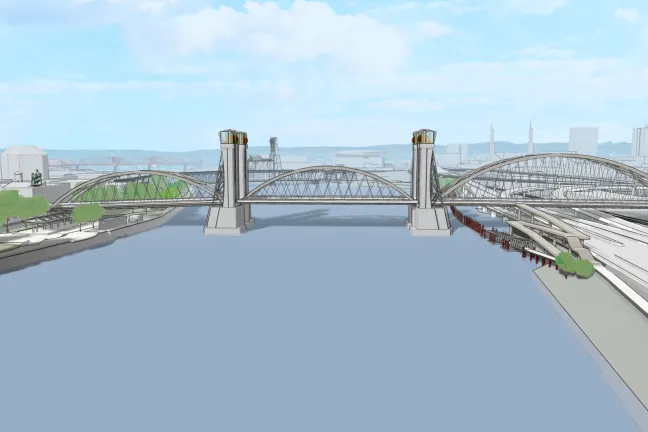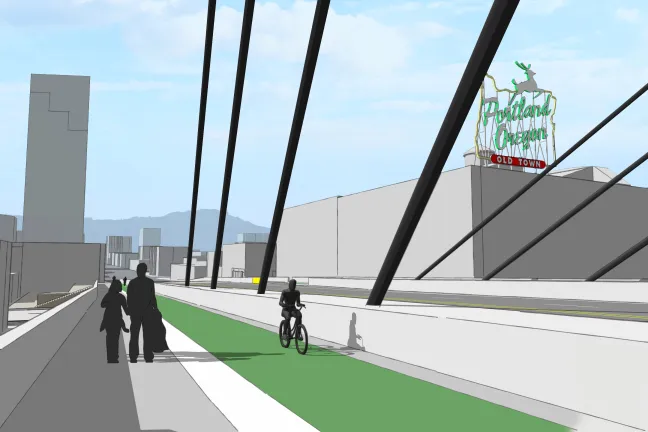The public is invited to learn about the recommended preferred alternative for a new earthquake-ready Burnside Bridge and share their preferences through an online survey offered through August 31.
The survey is part of an online open house at www.BurnsideBridge.participate.online. The open house describes the recommended preferred alternative and other alternatives that are being studied and includes animated videos showing what a new bridge could look like. The open house is offered in English, Arabic, Chinese, Japanese, Russian, Spanish and Vietnamese.
In June, the Community Task Force that has worked with Multnomah County’s project team recommended the Replacement Long Span option as the preferred alternative. Their recommendation includes:
A new bridge with a movable span in the middle, and long spans on each side, reducing the number of columns in unstable soils near the river bank.
Closing the bridge during construction, instead of building a $90 million temporary bridge that would include two traffic lanes, sidewalks and bike lanes. Building a temporary bridge would extend construction by 1.5 to 2 years.
The Earthquake Ready Burnside Bridge project is studying four build alternatives that would create a resilient Burnside lifeline crossing over the Willamette River in the event of a major earthquake. Public input on the recommended preferred alternative will be shared with the Community Task Force in September and with a Policy Group of elected officials that will vote on the recommended preferred alternative on October 2.
The project is in the environmental review phase and will issue a draft Environmental Impact Statement in early 2021 for public review and comment. After addressing public comment, this phase will conclude with a Final Environmental Impact Statement and Record of Decision that is anticipated to be approved by Multnomah County and the Federal Highway Administration in the fall 2021. After approval, the project can proceed to the final design phase. Should the project secure the necessary funds, construction is expected to start in 2024.
This fall, the project will launch a Bridge Type Selection phase that will take public input through next spring. This phase will determine the long span structure type and what type of movable span should be included.
The Long Span was recommended by the task force because it:
Performs the best in an earthquake
Is the lowest cost (at an estimated $825 million)
Provides more open space for community uses under the bridge
Adds additional width on the bridge for bicyclists and pedestrians
Has the fewest impacts to natural resources


